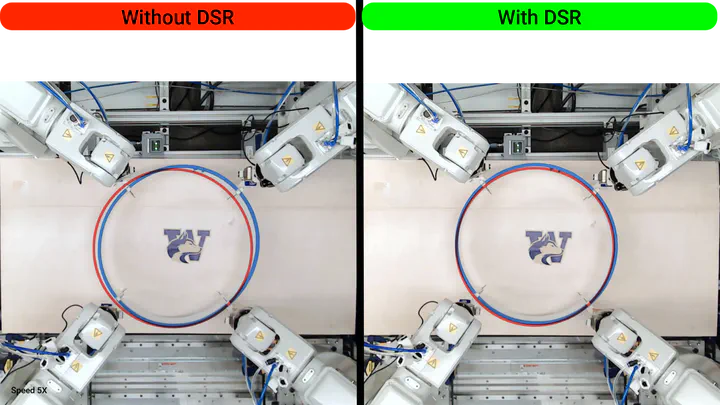Improving network's transition cohesion by approximating strongly damped waves using delayed self reinforcement

Abstract
Cohesive networks aim to achieve similar response in each agent not only at steady state but also during transitions from one consensus value to another. Standard consensus-based approaches approximate the diffusion equation, which leads to decay of transition information for agents that are farther away from the leader, and results in loss of cohesion during rapid changes. Increasing the alignment strength in standard first-order consensus-based approaches enables each agent to respond faster to the changes in neighbor states. Nevertheless, it does not necessarily increase cohesion during the transition. Moreover, increasing the alignment strength also requires an increase in update bandwidth. In contrast, delayed self reinforcement (DSR) approach enables increased cohesion without increasing the update bandwidth. The main contribution of this article is to explain this increased cohesion with DSR by showing that the DSR approximates a strongly damped wave equation, where each agent not only attempts to align with its neighboring states but also to align with the rate of change of its neighboring states.
Type
Publication
IEEE Indian Control Conference
This work is driven by the results in my previous paper on LLMs.
Create your slides in Markdown - click the Slides button to check out the example.
Add the publication’s full text or supplementary notes here. You can use rich formatting such as including code, math, and images.